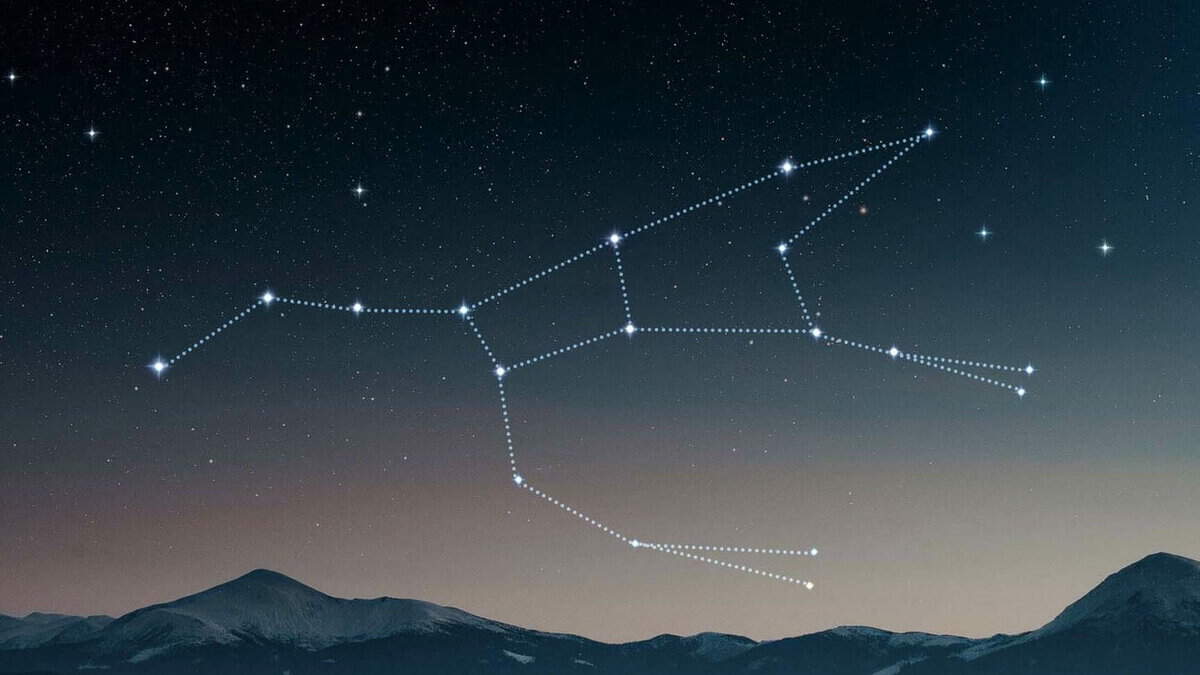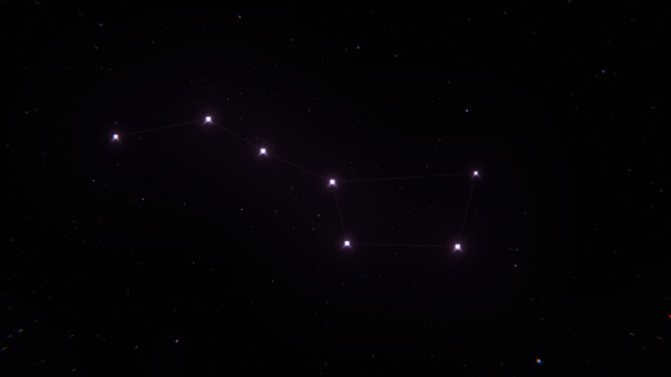


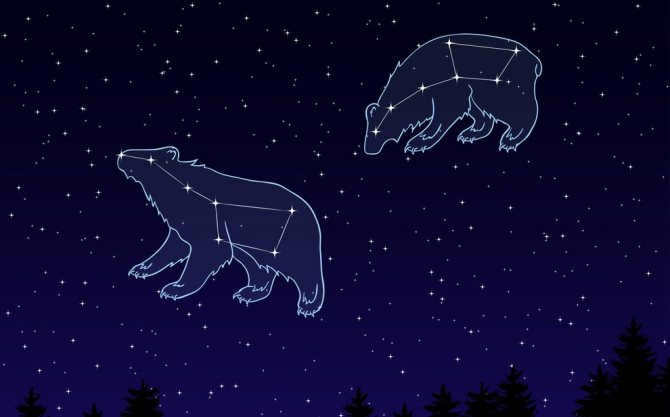
Truly, the celestial sky presents a rather disorderly scene. It takes a highly developed imagination to perceive, much like the ancients did, the random arrangement of stars as human figures, animals, and various objects. However, there are some genuinely remarkable star formations that capture one’s attention! One such example is the renowned Big Dipper, which serves as a prominent landmark in our sky. Interestingly, the Big Bucket is not a constellation in itself, but rather a component of the Big Dipper constellation. So, how does one locate the entire Big Dipper in the sky?
The solution is simple: by distancing oneself from the ladle!
But first, it is necessary to locate the dipper itself.
The appearance, description, and characteristics of the Big Dipper
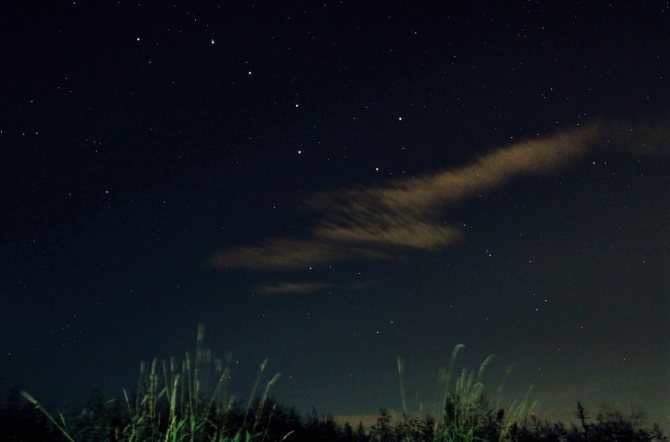
Here is a photo depicting the Big Dipper in the night sky.
Ursa Major, also known as the Big Dipper, is the third largest constellation in terms of size. It covers a significant portion of the starry sky, accounting for over 3% of the total area, which amounts to approximately 1279.66 square degrees. This cluster of stars revolves around Polaris, the North Star, ensuring that it remains visible above the horizon throughout the year.
The Big Dipper is characterized by seven prominent stars that collectively resemble a bucket with a handle. In Latin, this constellation is referred to as Ursa Major and is commonly abbreviated as UMa.
There are numerous constellations surrounding the cluster. Its impressive size makes this not surprising. The neighboring constellations include: Draco, Camelopardalis, Coma Berenices, Canes Venatici, and both Leo constellations.
Fun fact: In the autumn, the Great Bear constellation descends to the horizon, leading to a legend among Native Americans that it is preparing for winter hibernation.
In Russia, the constellation is visible throughout the year, but its stars shine particularly brightly in April compared to other months. The movements of the Great Bear can be used to determine the month and approximate date. Additionally, ancient Chinese people were able to tell time based on the position of the constellation’s handle.
The seven most brilliant stars
Below we take a closer look at the seven most brilliant stars of the Ursa Major constellation in descending order of their visual stellar magnitude:
Aliot (Epsilon of Ursa Major).
This star, with a blue-white color, is classified as a subgiant. It is relatively close to our solar system, located only 81 light-years away. With a visual magnitude of 1.75, Aliot is about 4 times more massive than the Sun and has a diameter 2 times larger. Its luminosity is approximately 127 times that of our Sun.
Dubhe: The Alpha Star of the Big Dipper
Dubhe is a massive orange giant situated 124 light-years from Earth. With an apparent stellar magnitude of 1.81, it shines 415 times brighter than our Sun. Remarkably, Dubhe is not a solitary star but rather a binary system, consisting of two stars that revolve around each other in a 44.4-year orbit.
This is a blue-white star located on the main sequence. The distance from the Sun to this particular star is approximately 100 light years. Its visual stellar magnitude is around 1.85. Moreover, the star is six times more massive than the Sun and shines 700 times brighter.
Mizar and Alcor (Zeta of the Big Dipper/80 of the Big Dipper)
Mizar and Alcor, also referred to as the Horse and Rider, are widely recognized double stars that can be easily seen without any optical aid. Both of these stars are white and positioned about 80 light-years away from our planet. Mizar possesses a brightness of 2.23 magnitudes, while Alcor has a magnitude of 4.01. These two stars appear to be in close proximity to each other, prompting ancient civilizations such as the Persians, Romans, and Arabs to utilize them as a test for aspiring archers.
A white celestial body. The distance from this celestial body to Earth is approximately 79 light years. The object has a stellar magnitude of 2.34. The celestial body has a radius and mass that are approximately three times that of the Sun. It emits light that is 70 times brighter.
Fekda (Gamma of the Big Dipper).
Another white celestial body located in the main sequence. To reach this celestial body, one would need to travel 84 light-years. It has an apparent stellar magnitude of 2.43. The celestial body emits light that is about 71 times brighter than the Sun.
A star with a blue-white color is located in close proximity. The distance between us and this star is just a short distance away, as it is only 58.4 light-years away. This star has an apparent magnitude of 3.312, indicating its brightness. It is also 63% more massive than our sun and shines 14 times brighter.
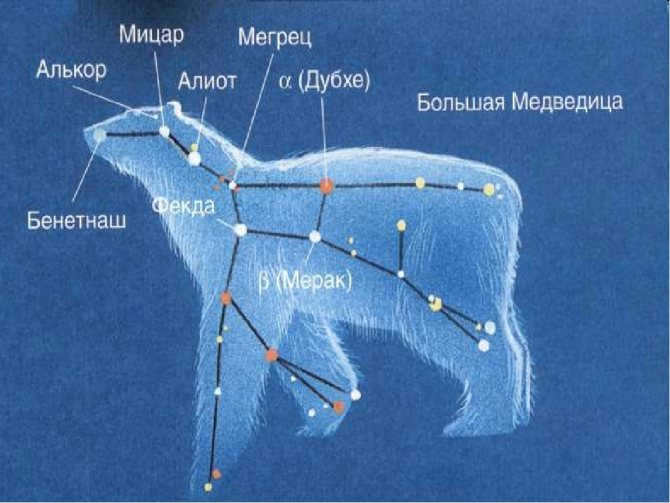
The most luminous stars in the constellation of Ursa Major. Obtained from publicly available sources.
What is the method to locate the constellation of Ursa Major in the celestial sphere?
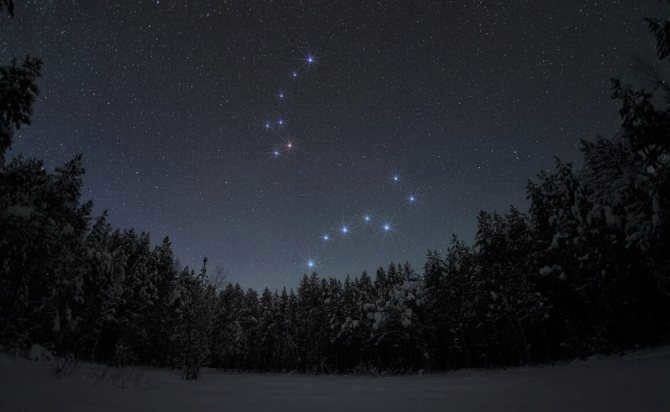
Image of the Ursa Major and Ursa Minor
Locating constellations in the sky can be quite challenging without special equipment. However, thanks to the distinctive shape of the Big Dipper, it is relatively easy to find and use as a guide. Once a person has located this asterism, they can easily navigate the night sky.
During late summer and early fall, the Big Dipper can be found in the northern part of the celestial sphere. For optimal viewing conditions, it is recommended to wait until nighttime and venture outside the city to avoid light pollution from houses and streetlights that can interfere with the visibility of stars.
Fascinating fact: The position of the Sun at noon can be used to determine the north. At this time, the starry sky is opposite, in the south.
During the autumn season, the asterism can be seen high up in the sky with a horizontal alignment. The stars that form this asterism shine brightly enough for the naked eye to easily spot them, and our brain naturally connects these stars together, forming a recognizable shape.
Due to the Earth’s rotation around the Sun and its own axis, the arrangement of constellations in the night sky gradually changes when observed from a specific location. Between the months of January and February, the Big Dipper undergoes a slow circular rotation: the bucket portion tilts downwards from its horizontal position, while the handle remains in place. Additionally, the entire cluster gradually shifts towards the northeast.
In the springtime, it becomes more challenging to locate the Big Dipper in the night sky. During this period, the asterism appears to be “lid up” when viewed, making it less noticeable to an uninformed observer.
The Big Dipper is most poorly visible in the northern regions of Russia. In these areas, there are frequent occurrences of white nights, which make it difficult to see the stars. Additionally, when observing this constellation from the middle and southern parts of the country, it is important to note that the Dipper appears upside down, with the handle pointing upwards.
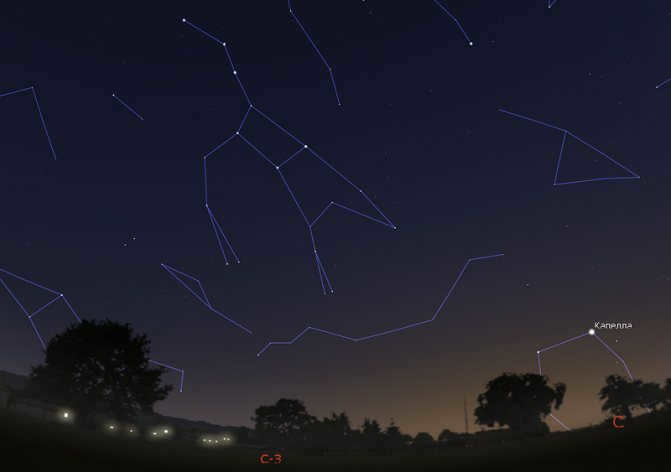
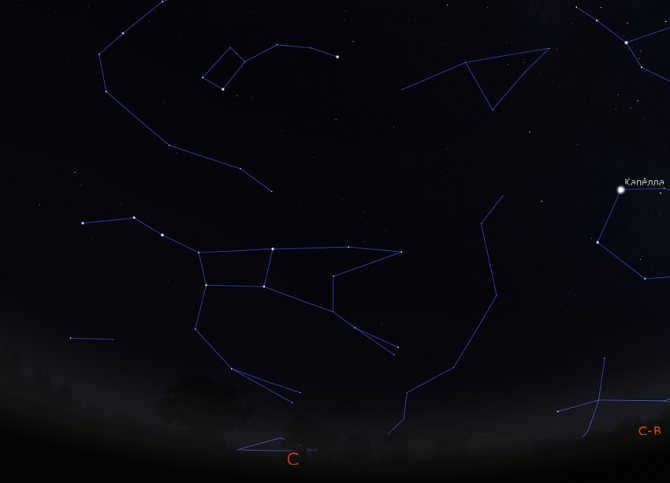
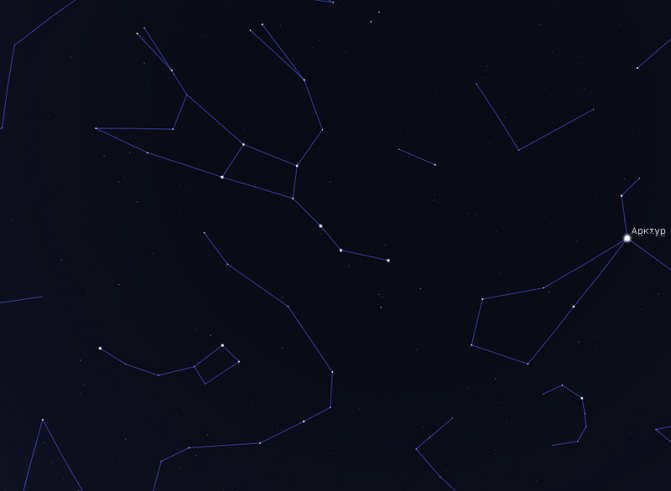
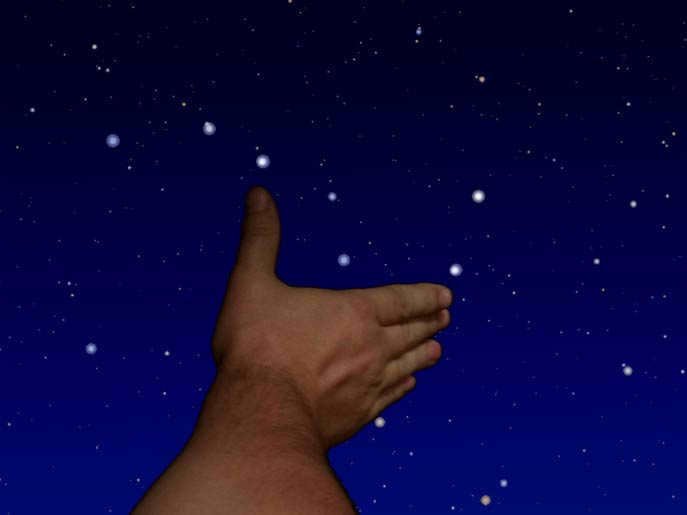
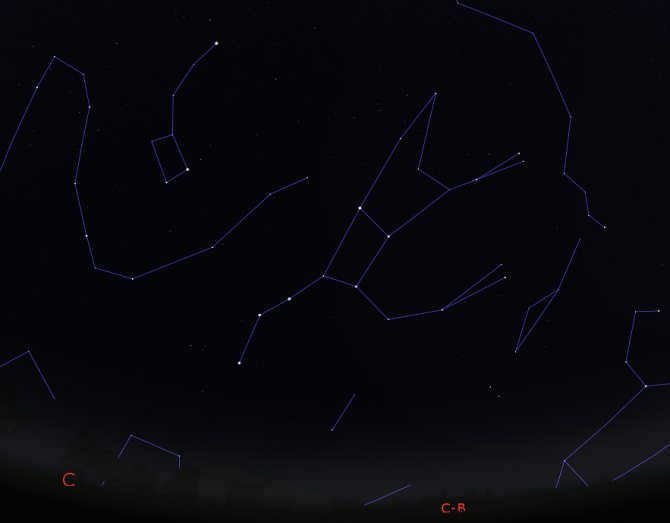
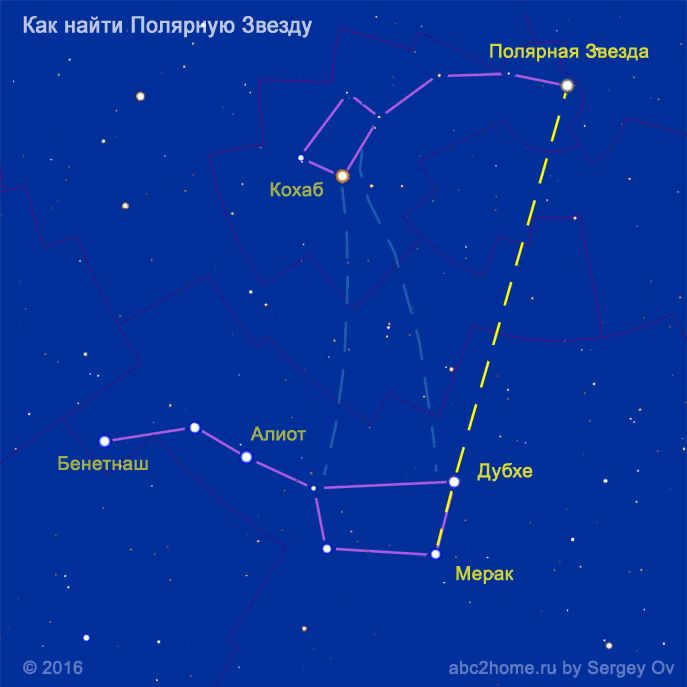
We have examined the constellations near the North Pole that are observable throughout the year. However, that is not the only fascinating celestial phenomena you can discover in the night sky of the Northern Hemisphere. So, let’s delve deeper and explore some more captivating star clusters.
Locating the Andromeda Constellation and Galaxy
Despite being the closest galaxy to our Milky Way and rapidly approaching us, the Andromeda Nebula appears as a small star. It is one of the stars within the Andromeda constellation. While spotting the Andromeda constellation in the night sky is not challenging, the galaxy itself is barely perceptible.
Fascinating! The Andromeda Nebula is the sole galaxy visible to the naked eye in both polar and temperate latitudes. Can you fathom the vastness of the cosmos?
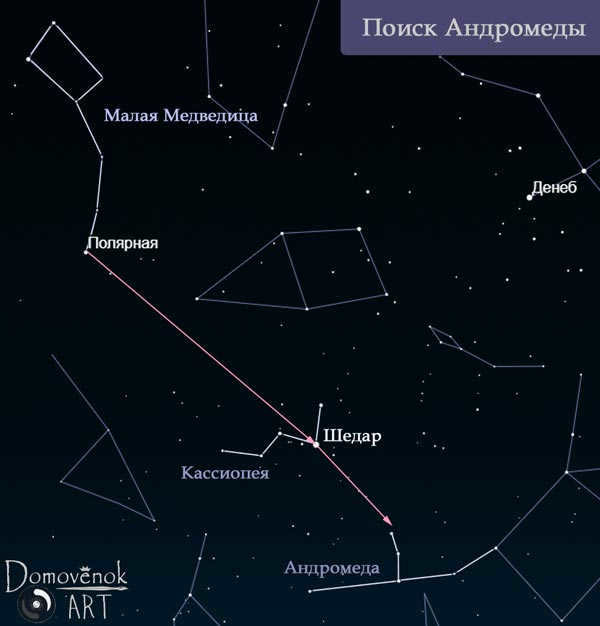
To locate the constellation Andromeda, begin by identifying the constellation Cassiopeia and Polaris. Next, draw a straight line from Polaris through the star Shedar in Cassiopeia (as shown in the image). By extending this line further, approximately halfway between these stars, you will come across a small cloud-like formation. This is the Andromeda Nebula galaxy. Additionally, in close proximity to this nebula, you will find three stars that are part of the constellation Andromeda. For a clearer understanding, refer to the provided image.
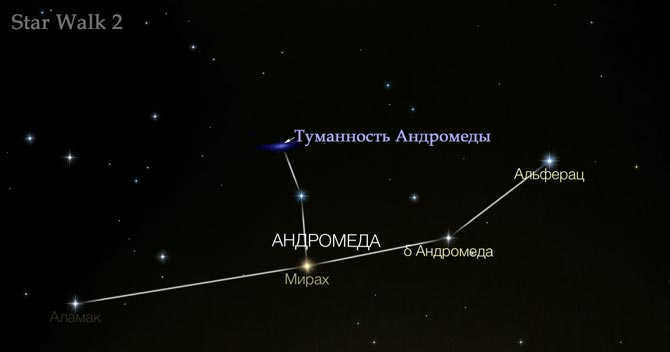
The position of the constellation Perseus in the nocturnal expanse.
Perseus is located in close proximity to Cassiopeia. You can easily locate it by directing your gaze just “beneath” the letter M and Andromeda. It is a relatively spacious constellation, prominently observable during the summer months, particularly in August.
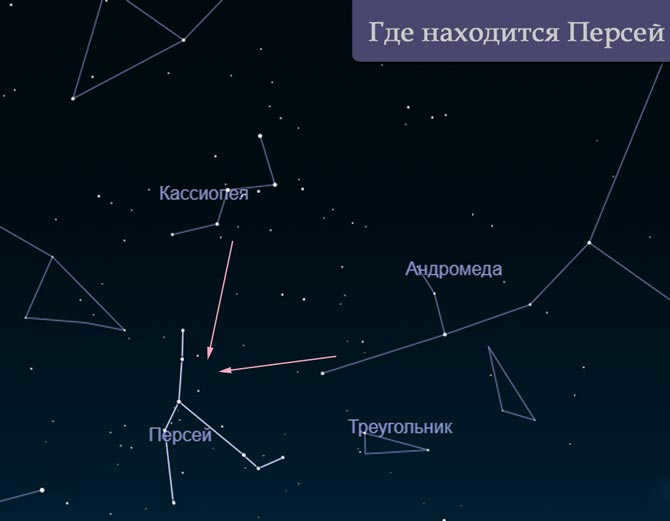
The enigmatic constellation Orion
If we venture further into the night sky, somewhere nestled between Perseus and the radiant star Capella within the Ascendant constellation (which is particularly prominent in the summer nights of the northeastern sky), we will encounter the enigmatic celestial hero known as Orion. This constellation holds a unique position in that it can be observed from both the northern and southern hemispheres due to its equatorial alignment. However, like all celestial phenomena, its appearance is governed by its own schedule, adding to its mythical allure.
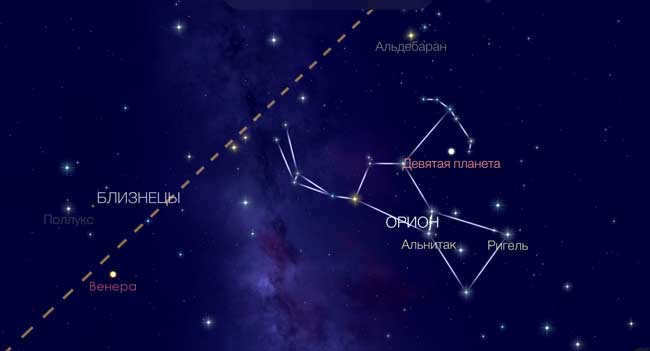
Winter is the ideal time to catch a glimpse of Orion. The red supergiant star Betelgeuse, which shines the brightest in the constellation, is one of the earliest to make its appearance in the night sky. To spot Orion during the summer months, you will need to stay up until the middle of the night. In August, for instance, around 3-4 am, you can observe it in the southeastern region of the sky.
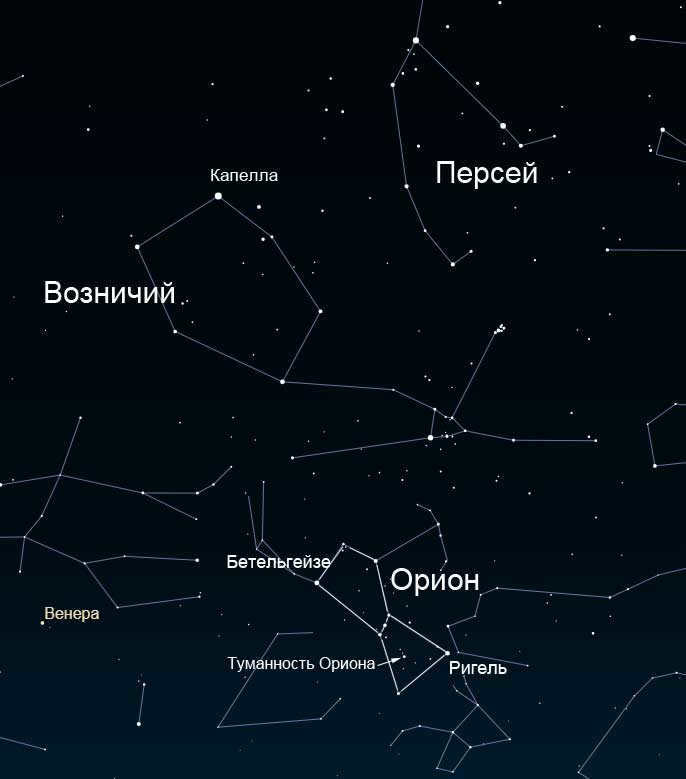
It is quite simple to locate the constellation Orion due to its distinctive asterism, known as Orion’s Belt, which consists of three bright stars arranged in a straight line. By expanding our view slightly, we can also recognize a figure resembling an hourglass formed by the stars Betelgeuse, Bellatrix, Saif, and Rigel.
The ancient people’s portrayal of the Big Dipper
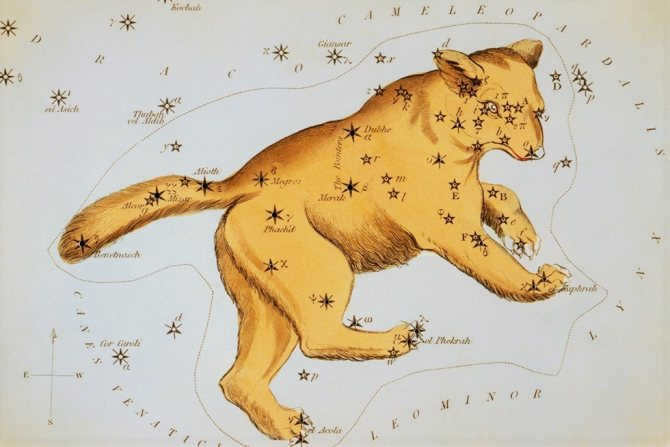
One of the options for the representation of the constellation Ursa Major on a celestial map.
Ursa Major is recognized as one of the oldest constellations, as it is mentioned in the historical records of almost all civilizations that have existed on Earth. The earliest references to this group of stars are found in India, where it was known as “Sapta Rishi” (seven sages). This name was given because of the seven prominent stars that form the shape of a Dipper. The Chinese also took notice of this constellation and used its position in the sky to determine time.
According to the Indians, this figure can also be seen as a bear, although they believe that the bear is made up of four stars arranged in the shape of a trapezoid. The handle of the Bucket is said to represent three hunters who are chasing the bear. Aliot is leading the group and is holding a bow, Mitzar is carrying a cauldron, and Benetnash is at the back of the group with a pile of brushwood for starting a fire.
The Mysterious Secrets of the Big Dipper: Various Interpretations by Different Cultures
Ancient Egypt’s Fascination with the “Bull’s Thigh”
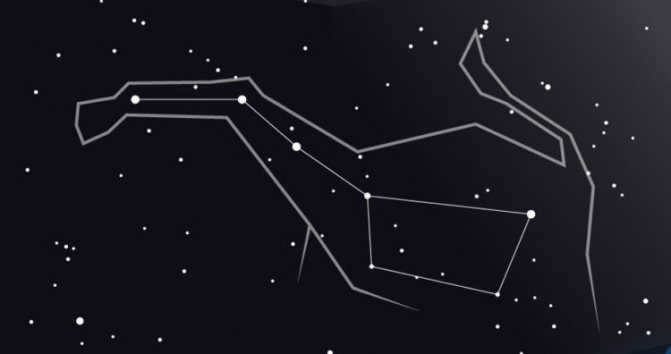
China’s "Imperial Carriage of Emperor Shandi".
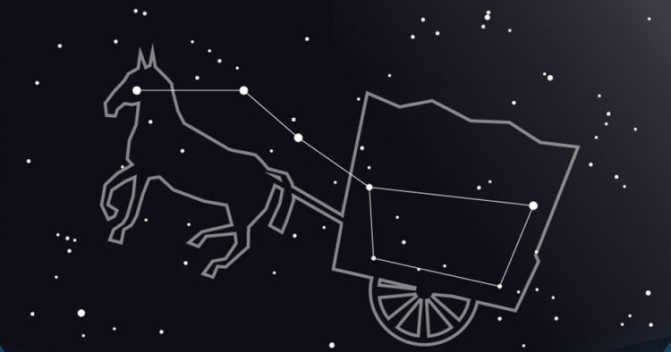
The ancient astronomers of China divided the celestial sphere into 28 vertical sectors known as “houses.” These houses represent the path that the Moon takes during its monthly journey. This system is similar to the Western astrology, where the Sun passes through the 12 signs of the Zodiac on its annual rotation. The Egyptians originally developed this 12-sector division, which was later adopted by Western astrology.
In the center of the sky, similar to the emperor in the capital city, the Chinese astronomers placed Polaris, which had already taken its customary position. The seven brightest stars of the Big Dipper are located near Polaris within the Purple Enclosure. This enclosure is one of the three enclosures that surround the palace of the “royal” star. These stars can also be referred to as the Northern Bucket, as their orientation corresponds to the seasons. Alternatively, they can be seen as part of the carriage of the Heavenly Emperor Shandi.
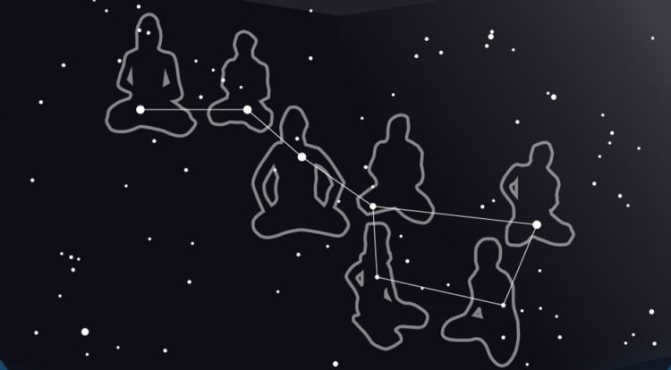
Ancient India’s observational astronomy did not achieve the same level of advancement as mathematics. It was influenced by both Greece and China. For instance, the 27-28 “stands” (nakshatras) that the Moon passes through in about a month bear a striking resemblance to the Chinese lunar “houses”. The Hindus also placed great significance on Polaris, which the Vedas’ experts believed to be the dwelling place of Vishnu himself. The Bucket asterism, located beneath it, was considered to be Saptarisha – seven sages who were born from Brahma’s mind and are the ancestors of our current era (Kali-yuga) and all living beings within it.
Greece’s “Medusa”
The mythical creature known as Medusa from Greek mythology has been a fascinating subject for centuries. Greece’s version of Medusa, with her infamous snake hair and ability to turn people to stone with her gaze, has captivated the imagination of people around the world.
The story of Medusa has been told in various forms throughout history. According to Greek mythology, she was once a beautiful woman who was cursed by the goddess Athena. As punishment for sleeping with Poseidon in Athena’s temple, Medusa’s hair was turned into snakes and anyone who looked into her eyes would be turned to stone.
In ancient Greece, Medusa was often depicted in artwork and architecture. Her image was used as a symbol of protection and warding off evil. Many temples and statues were dedicated to her, and her likeness was often worn as a talisman or amulet.
Today, Medusa continues to be a popular figure in popular culture. Her image can be seen in movies, books, and artwork, and she is often portrayed as a powerful and seductive character. Despite her fearsome reputation, Medusa remains a fascinating and enduring symbol of Greek mythology.
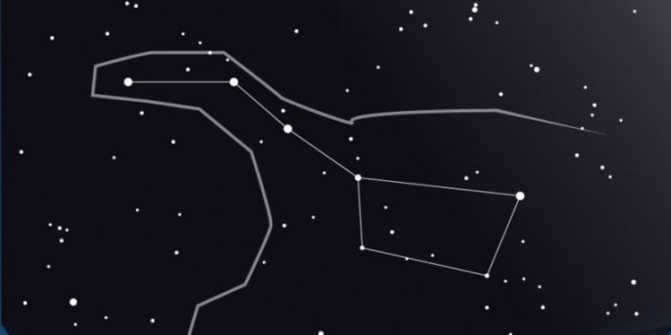
The constellation of Ursa Major, commonly known as the Big Dipper, is part of the 48 constellations that were documented by Ptolemy in his star catalog around 140 BC. However, its existence is mentioned even earlier, dating back to the time of Homer. Greek mythology provides various interpretations for the formation of this constellation, but they all revolve around the story of Callisto, a beautiful woman who was a companion of the hunter-goddess Artemis. According to one version of the myth, the mischievous Zeus, using his typical tactics of reincarnation, managed to seduce Callisto, which angered his wife Hera and Artemis herself. In order to protect his mistress, Zeus transformed Callisto into a bear, who then wandered through the mountain forests for many years. Eventually, her own son, fathered by Zeus, encountered her during a hunting trip. Once again, the supreme god had to intervene, this time to prevent a tragedy from occurring. He transported both Callisto and her son to the heavens, ensuring their safety and well-being.
America’s Majestic Grizzly Bear
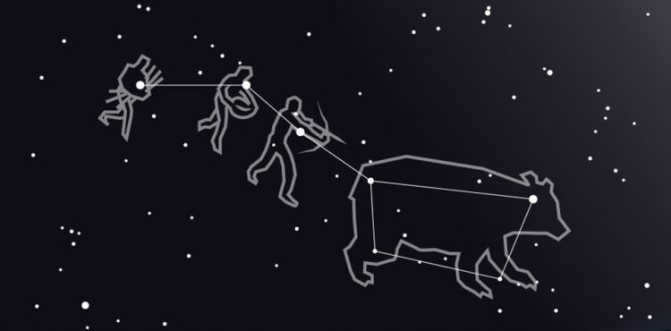
The Native Americans seemed to have a deep understanding of wildlife. According to the Iroquois legend, the constellation of the “celestial bear” does not have a tail. Instead, it is represented by three stars that are believed to be three hunters chasing the bear. Aliot is depicted drawing a bow with an arrow, Mitzar carries a cauldron for cooking meat (Alkor), and Benetnash carries kindling to light the hearth. As autumn arrives and the constellation sinks low on the horizon, it is said that blood from a wounded bear drips down, staining the trees with a mix of colors.
Stars from the Ursa Major Constellation
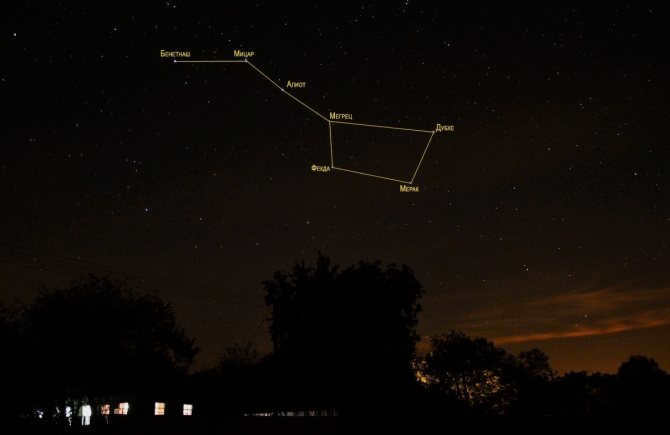
The primary stars of the Ursa Major constellation
The Ursa Major constellation is composed of a remarkable number of stars. However, within its asterism, the Big Dipper, there are only seven luminaries that form a distinctive shape. With the help of modern technology, astronomers are able to continuously observe these stars and gather the necessary information. The asterism of the Big Dipper includes:
- Dubhe – serves as the alpha and is considered the second brightest star in the constellation. Detailed studies have revealed that Dubhe consists of two luminaries: the main sequence and the orange giant.
- Merak is the beta of the cluster. While not considered the most prominent in the night sky, it shines 69 times brighter than the Sun.
- Fekda is the luminary positioned at the bottom of the Big Dipper, below the handle.
- Aliot – the most prominent star in the cluster, easily visible in the night sky.
- Mizar – not very visible because the nearby star Alcor is nearly twice as bright.
- Alkaid – the farthest luminary from the rest of the group, situated at the end of the handle of the Big Dipper.
In addition to the seven stars in the asterism, the constellation contains approximately 125 other stars. However, only a few dozen of them can be seen with the naked eye. The three most notable stars are located to the right of the Dubhe-Merak pair, forming a triangle. In the lower right corner of the Big Dipper, there is a similar group of stars that make up another triangle, including lambda, mu, and psi.
Fun fact: Some cultures interpret these two triangles as representing the hind and front paws of a bear.
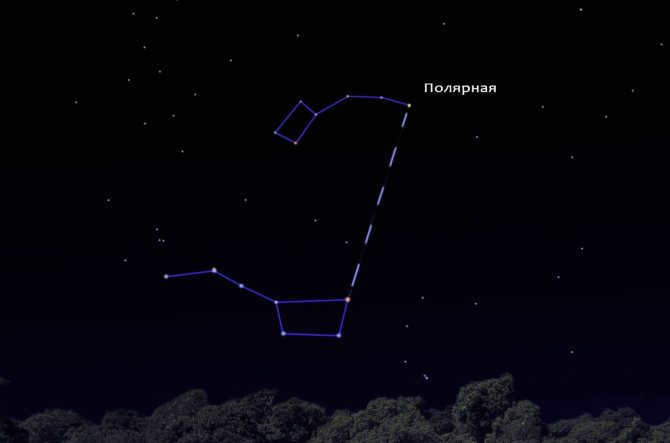
Image of Polaris in relation to the Big Dipper
In addition, there are several important stars located to the right of the Big Dipper, with only two stars hidden behind the horizon in Russia. And because the constellation is always visible in Russia, local astronomers and stargazers can easily locate the following objects:
- Polaris;
- Cassiopeia;
- The Leo constellation is nearby;
- The stars Capella and Arcturus;
- The Gemini constellation;
- The Virgo constellation.
If you happen to find yourself in the middle of the wilderness at night, in an unsuitable place to sleep, and you forgot or broke your compass, knowing how to navigate by the stars can be very useful.
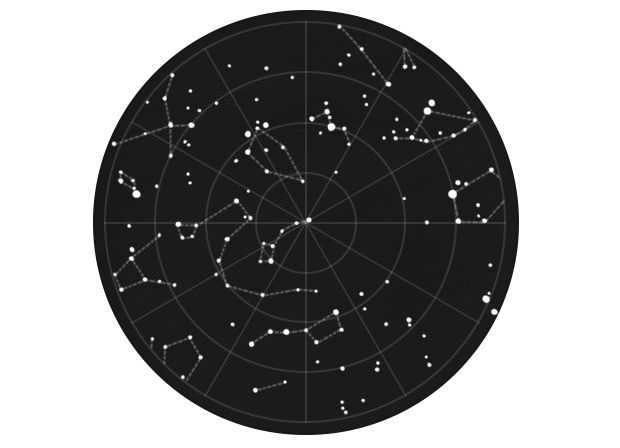
The North Star
Polaris is the primary celestial feature in the night sky. It distinguishes itself from other stars and constellations by its stationary position, as it does not appear to move across the sky like others do. Polaris consistently indicates the north direction, with only a slight deviation of one and a half degrees throughout the night. This characteristic is particularly important for accurate navigation, although it may not hold much significance for a lost tourist. To locate Polaris, one must first identify two renowned constellations known as the Big Dipper and the Little Dipper. In the Big Dipper, the two rightmost stars that form the “wall” of the dipper are crucial. By drawing a straight line from the upper star, which is equivalent to four distances between the two “extreme” stars of the Big Dipper, Polaris comes into view. It can be found nestled in the handle of the bucket-shaped Little Dipper.
Undoubtedly, it would be simpler to immediately locate the Little Dipper, however, empirical evidence demonstrates that the Big Dipper is easily noticeable while the Little Dipper can sometimes be challenging to spot. In the event that the Big Dipper is obscured by clouds or obstructed by dense foliage, one can utilize the constellation Cassiopeia to locate Polaris. This constellation, prominently visible against the backdrop of the Milky Way, bears a resemblance to the letter “M” or “W”, whichever one prefers. Polaris can be found in a straight line to the left of the central star of Cassiopeia. Therefore, once Polaris has been found, determining the cardinal directions becomes a matter of technique: by directly facing the star, east will be on the right, west on the left, and south behind you.
Southern Hemisphere
In the Southern Hemisphere, Polaris cannot be seen, so the Southern Cross serves as the prominent celestial marker, indicating the direction south. The Southern Cross consists of four bright stars arranged in the shape of a cross. It is crucial to distinguish it from the False Cross, which is situated to the right and has stars that are dimmer and more widely spaced. Additionally, to the left of the Southern Cross, there are two stars that provide orientation. The southern direction is determined by drawing an imaginary line through the vertical axis of the Southern Cross. To establish this, we utilize the same reference stars. We mentally connect them with a line, and from the midpoint of this line, we draw a perpendicular line. The intersection point of the lines coming from the Southern Cross and the orientation stars indicates the location of the South Pole.
Constellations’ Location
If you possess a solid comprehension of the constellations, it won’t be challenging for you to determine the cardinal directions on a clear night. The constellations alter their position in the celestial sphere not just throughout the night, but also throughout the year. It’s important to bear in mind that at midnight, you can observe the following constellations in the southern sky: in January – Canis Major and Canis Minor, in March – Leo, in May – Virgo, in November – Taurus, in December – Orion. Furthermore, the Milky Way roughly extends from south to north, albeit these directions are only approximations. Therefore, relying on the Milky Way as a point of reference should solely be employed as an extra precautionary measure.
In order to use this technique, some preliminary steps are necessary. First, you will need to bury two sticks of varying lengths into the ground. These sticks will serve as reference points for determining your direction. By observing the movement of any star, with the exception of Polaris, in relation to these sticks, you can easily ascertain which way you are facing. If the star appears to rise upwards, it indicates that you are looking towards the east. Conversely, if the star appears to descend, it means you are facing west. If the star seems to move in a clockwise direction, you are facing north, whereas if it moves counterclockwise, you are facing south. It is important to note that this method provides only approximate directions and should be utilized solely in the most dire circumstances.
While it is possible to navigate without Polaris, having a single, easily recognizable light source that remains stationary and is directly above true north is a significant advantage. Polaris serves as a fixed point, situated clearly above the north pole and perfectly aligned with the Earth’s axis of rotation. Unlike any other star in the sky, its apparent position never shifts. Once you locate Polaris, which is a relatively simple task, you can simply draw a line straight up to the horizon to determine true north. To locate Polaris (shown above on the right), follow the two stars at the end of the bowl of the Big Dipper constellation.
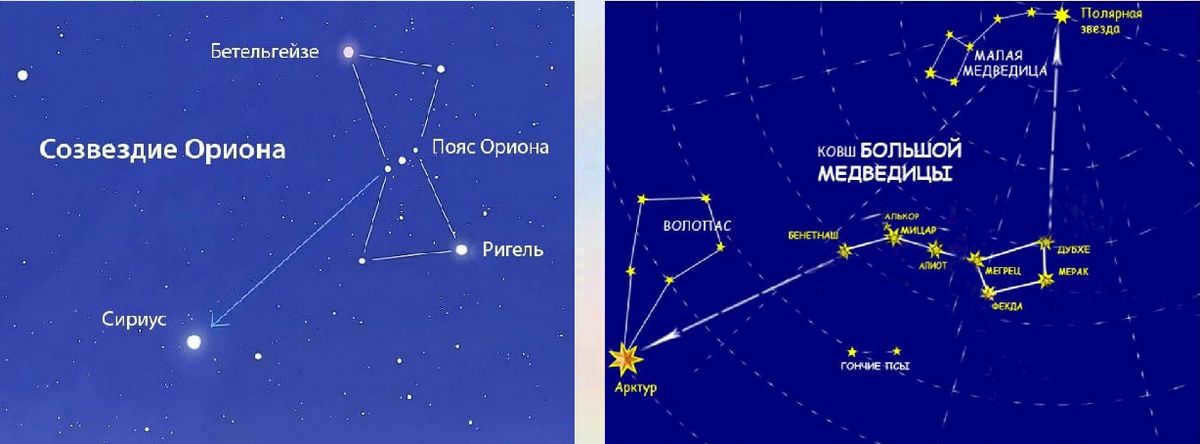
Starting your navigation in the Southern Hemisphere: begin with the Southern Cross constellation
In the Southern Hemisphere, the Big Dipper and Polaris are not visible. If there were a corresponding star in the South, navigation below the equator would be just as easy as above it. Unfortunately, this is not the case.
To determine south, locate the Southern Cross constellation, also known as the Cross. The Cross, along with two nearby stars, will indicate the general direction of true south.
The Southern Cross consists of five stars that, when connected, form the shape of a Christian cross. You can identify the Cross by its pointer stars, which are the brightest stars in the neighboring Centauri constellation. If you see a potential Cross, search its immediate surroundings for two very bright stars. Drawing an imaginary line connecting the pointer stars to the Southern Cross will intersect with the top star of the Cross.
Once you have identified the Cross and drawn a vertical imaginary line through it, erase the line through the pointer stars and draw another line between the pointer stars at a 90 degree angle. Continue drawing this line until it intersects with the line through the cross. This intersection point provides a good estimate of the location in the sky above the South Pole or true south.
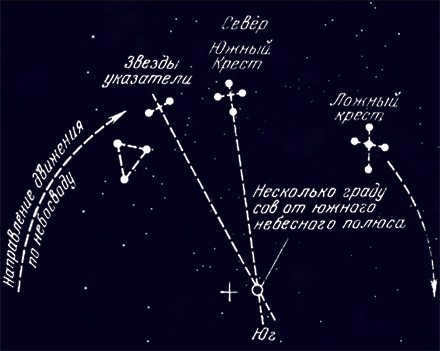
Determining Latitude
To find your latitude during brief periods of twilight, you can determine the angle of elevation of the North Star. This calculation involves three reference points: the North Star, the horizon, and your location. Once you have these three points, you can draw two lines – one from your location to the star and one from your location to the horizon. The angle formed where these lines intersect represents your latitude.
At the North Pole, where Polaris is directly overhead, latitude is 90 degrees north; at the South Pole, 90 degrees south; and at the equator, where Polaris is on the horizon, latitude is 0 degrees.
What is longitude?
Longitude is a measurement that indicates the distance, expressed in degrees, between a certain location and the prime meridian. It is a challenging task for celestial navigators to determine longitude accurately. To calculate longitude, it is necessary to have knowledge of Greenwich Mean Time (GMT), which cannot be determined solely from celestial observations. A highly precise chronometer is required for this purpose. In Greenwich, England, the prime meridian is designated as 0 degrees. By comparing the local time with the time in Greenwich, one can determine the longitude. For instance, if it is 7 a.m. in Greenwich and 12 p.m. at the current location, then the longitude is determined to be 75 degrees east of Greenwich. This calculation can be done by multiplying the time difference by 15 degrees, as the Earth rotates 15 degrees per hour or completes a full rotation of 360 degrees in 24 hours.

From this chapter in the textbook “The World Around Us,” a first-grade student will gain knowledge about what lies above us and how to create models of planets and constellations.
1) Reflecting on personal observations, describe the characteristics of the sky during the day and at night. What did you observe in the sky during daytime and nighttime?
During the day, the sky appears blue and vibrant, with the sun casting its radiant light upon it. At night, it transforms into a dark expanse, almost black in color. One can observe the presence of stars and the moon in the night sky.
2) Compare the Sun and the objects depicted in terms of shape, color, and size.
The Sun is spherical in shape and has a red color. Despite its enormous size, it appears small to us due to its great distance.
The cube, on the other hand, is green and has several sharp corners. Its shape, size, and color are quite distinct from our star.
The third object is almost flat and disk-shaped. It is white with a blue border. Although it resembles the Sun in shape when viewed on a plane, in space it bears no resemblance to our star.
Lastly, the ball is multicolored and round, with a spherical shape. While it shares a similar shape with the Sun, its color and size are different.
3) Consider creating a plasticine replica of the Sun. Accomplish this task and elaborate on the similarities and differences between your model and the actual Sun.
To fashion the model, procure a portion of yellow plasticine. Shape it into a spherical form, resulting in a rudimentary representation. This model will portray the Sun’s shape and color, albeit significantly diverging in terms of size.
4) Consider ways to create a replica of the ladle-shaped part of the Ursa Major constellation. Accomplish this task. Additionally, utilize the atlas identifier to construct models of 1-2 other constellations.
Constructing a model of the selected constellation can be achieved through the art of applique.
To accomplish this, adhere silver stars in the form of constellations onto a dark piece of paper, symbolizing the night sky.
For enhanced clarity, the stars can be connected with lines.
Once completed, the model of the constellation will be prepared.
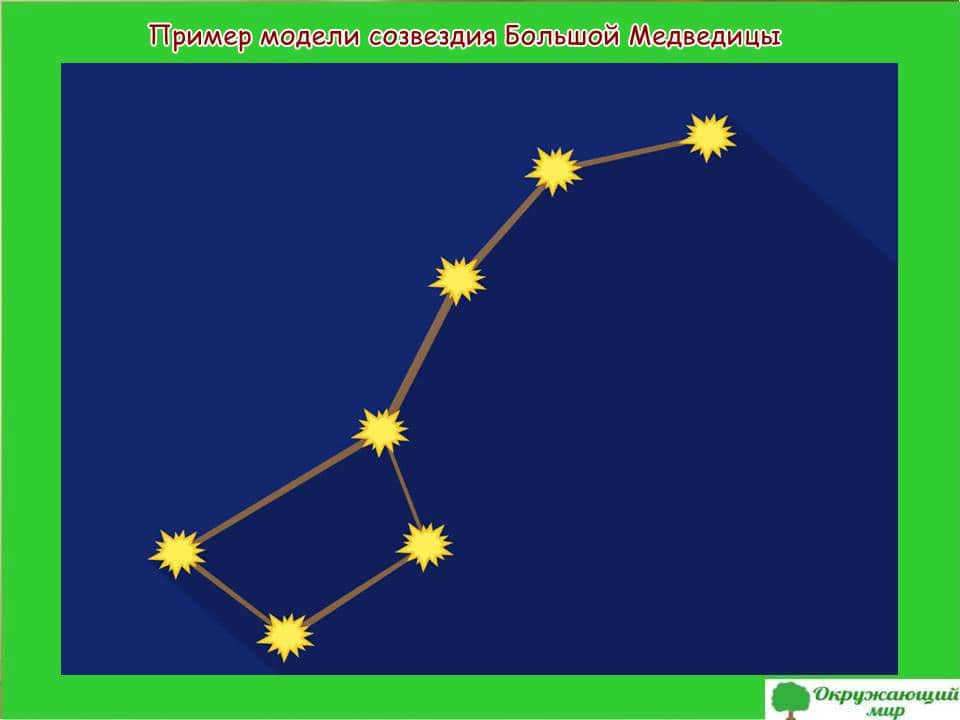
Also, it is possible to create a model-applique depicting different constellations such as Leo, Orion, and Cassiopeia.

Assignment
1. What is visible in the sky during the daytime and what is visible during the nighttime?
During the daytime, we can observe the Sun in the sky, while during the nighttime, we can see the stars and the Moon.

